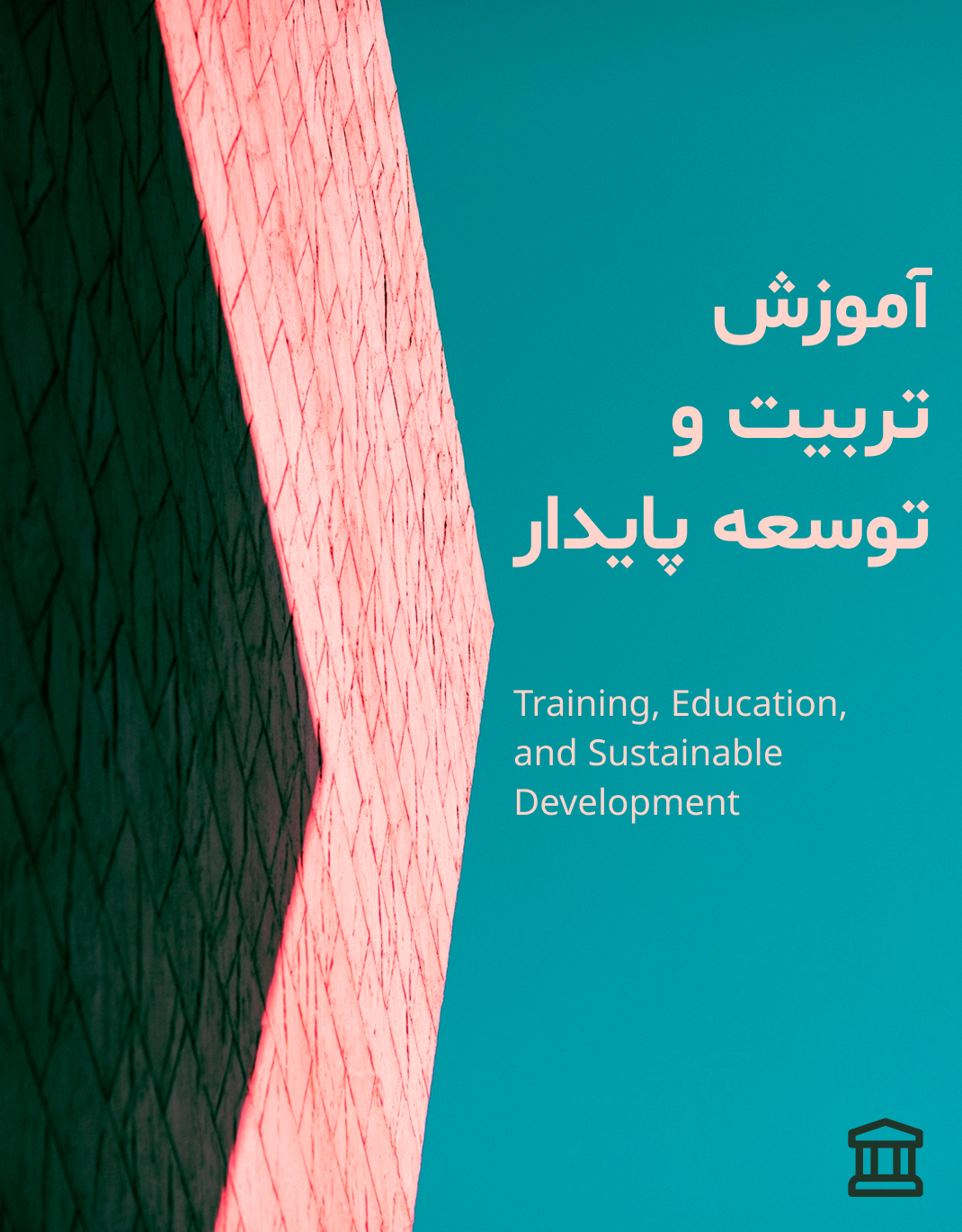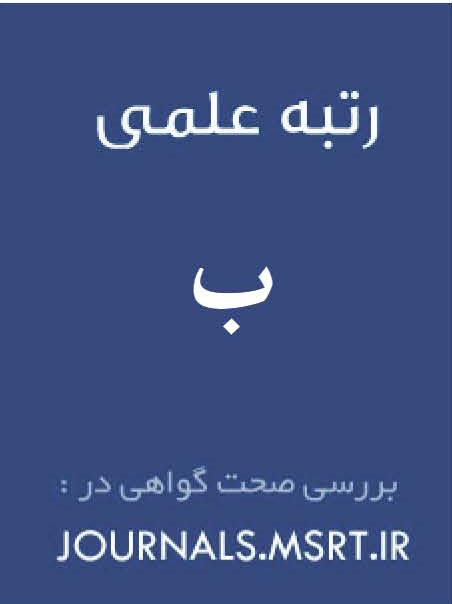مطالعه تطبیقی چالشهای اساسی مدیریت منابع انسانی در بانکهای خصوصی و دولتی استان آذربایجان غربی و ارائه الگوی مناسب
کلمات کلیدی:
مدیریت منابع انسانی , چالشهای مدیریت منابع انسانی, صنعت بانکداریچکیده
هدف این پژوهش، شناسایی و تحلیل چالشهای اساسی مدیریت منابع انسانی در بانکهای خصوصی و دولتی استان آذربایجان غربی و ارائه الگوی مناسب برای بهبود بهرهوری منابع انسانی در صنعت بانکداری است. این پژوهش از نوع کیفی و کاربردی است که در سه مرحله انجام شد. در مرحله نخست با استفاده از روش سنتز پژوهی، الگوی اولیه چالشهای اساسی مدیریت منابع انسانی طراحی گردید. در مرحله دوم، دادهها از طریق مصاحبههای نیمهساختاریافته با ۱۹ نفر از مدیران و کارکنان بانکهای استان آذربایجان غربی جمعآوری شد. انتخاب مشارکتکنندگان با روش هدفمند و تا مرحله اشباع نظری ادامه یافت. در مرحله سوم، الگوی حاصل با بهرهگیری از پرسشنامه و نظرات خبرگان اعتبارسنجی شد. دادهها با استفاده از کدگذاری باز، محوری و انتخابی تحلیل گردیدند. نتایج نشان داد که چالشهای مدیریت منابع انسانی در بانکهای دولتی و خصوصی در سه بعد رفتاری، ساختاری و زمینهای قابل طبقهبندی هستند. در بعد رفتاری، مسائلی نظیر بیانگیزگی، تبعیض شغلی و مقاومت در برابر تغییرات برجسته بودند. در بعد ساختاری، عواملی چون نبود نظام شایستهسالاری، ضعف نظام ارزیابی عملکرد و شکاف مهارتی شایعتر بود. در بعد زمینهای نیز تحریمهای اقتصادی، فشارهای سیاسی و کمبود نیروی ماهر از چالشهای کلیدی شناسایی شدند. هر سه بعد شناساییشده تأثیر منفی معناداری بر بهرهوری کارکنان بانکها داشتند. بهبود مدیریت منابع انسانی در صنعت بانکداری مستلزم آسیبشناسی جامع در سه بعد رفتاری، ساختاری و زمینهای است. الگوی ارائهشده میتواند به عنوان مبنایی برای تصمیمگیریهای استراتژیک و توسعه سیاستهای کارآمد در راستای افزایش بهرهوری و نگهداشت سرمایه انسانی در بانکها مورد استفاده قرار گیرد.
دانلودها
مراجع
Achi, S. E., & Sleilati, E. (2023). The effect of coaching on employee performance in the human resource management field: the case of the Lebanese banking sector. International Journal of Trade and Global Markets, 9(2), 137-169. https://doi.org/10.1504/IJTGM.2016.076321
Althabhawee, A. A. K., & Saeed, Z. M. H. (2024, March). Digital human resources management and its role in enhancing career agility: A research study that analyzes the viewpoints of a sample of employees at many private banks in the Najaf governorate https://doi.org/10.1063/5.0199664
Asadi Gorji, M. H., Tabari, M., Bagherzadeh, M. R., & Gholipour Kenani, Y. (2020). Strategic alignment of human resource management and organizational structure: A case study of Mazandaran Power Distribution Company. Executive Management Research Journal, 12(23), 239–259. https://jem.journals.umz.ac.ir/article_2925.html
Asmarian, A. (2006). Systematic activities in leadership development with an emphasis on the competency-based approach. Proceedings of the 3rd Conference on Human Resource Development, Tehran. https://civilica.com/doc/21794/
Bahari, B., & Taheri Rouzbahani, M. (2023). Designing an electronic human resources management model based on knowledge creation in knowledge-based companies. Journal of value creating in Business Management, 3(1), 106-121. https://doi.org/10.22034/jvcbm.2023.392785.1082
Bozhko, L., & Naizabekov, A. (2017). Challenges of Securing the Human Resources for Implementation of Industry Innovative Projects in Kazakhstan. Energy Procedia, 128, 406–410. https://doi.org/10.1016/j.egypro.2017.09.046
Divandari, A., Seyed Javadin, S. R., Khodadad Hosseini, S. H., & Estiri, M. (2015). Examining the relationship between human resource management practices with a high-performance work systems approach and market orientation in the banking industry. Public Management Outlook, 24, 35–57. https://jpap.sbu.ac.ir/article_95617.html
Doldi, A., Mozesi, A., & Gurji, M. B. (2023). Designing a human resources improvement model based on cloud computing (case study: Tejarat Bank). Science and Techniques of Information Management. https://doi.org/10.22091/stim.2023.9683.1980
Griep, Y., Hansen, S. D., Kraak, J. M., Sherman, U., & Bankins, S. (2024). Sustainable Human Resource Management: The Good, the Bad, and Making It Work. Organizational Dynamics, 1(1), 1-7. https://doi.org/10.1016/j.orgdyn.2024.101112
Hamilton, R. H., & Sodeman, W. A. (2020). The Questions We Ask: Opportunities and Challenges for Using BIG DATA ANALYTICS to Strategically Manage Human Capital Resources. Business Horizons, 63, 85–95. https://doi.org/10.1016/j.bushor.2019.10.001
Jazani, N. (2009). Strategic human resource planning and the national human resource development plan. Proceedings of the 5th International Conference on Strategic Management, Tehran. https://civilica.com/doc/102909/
Kultalahti, S., & Viitala, R. (2015). Generation Y—Challenging Clients for HRM? Journal of managerial psychology, 30(1), 101. https://www.researchgate.net/publication/273697625_Generation_Y_-_Challenging_clients_for_HRM
Purcell, J. (2003). Strategy and Human Resource Management. Palgrave Macmillan. https://www.researchgate.net/publication/37149236_Strategy_and_Human_Resource_Management
Putrini, N., & Satrya, A. (2023). The Impact of Human Resource Management Practices and Organizational Culture on Organizational Citizenship Behavior in Indonesian Sharia Banks. Al-Intaj Jurnal Ekonomi Dan Perbankan Syariah, 9(2), 147. https://doi.org/10.29300/aij.v9i2.10909
Rahman Seresht, H. (2011). A review of Selznick's institutional theory of organizational structure. Management and Development Process, 40, 1–16. https://ensani.ir/fa/article/283987/
Razmkhah, Y., & Sajadi Khah, G. (2024). Examining the Indicators of Human Resource Management and Social Responsibility on Organizational Legitimacy Factors (Case Study: National Bank Branches in Kohgiluyeh and Boyer-Ahmad Province). New Research Approaches in Management and Accounting Quarterly, 8(28), 1137-1151. https://majournal.ir/index.php/ma/article/view/2316
Sa'adat, E. (2013). Human Resource Management. SAMT Publications.
Shirzad, B., & Barazideh, M. (2016). Assessing the level of human resource productivity in Bank Melli Iran and strategies for its improvement. Educational Management Research, 29, 43–70. https://sanad.iau.ir/Journal/jearq/Article/1113295/FullText
Smith, S. S., Rohr, S. L., & Panton, R. N. (2019). Human Resource Management and Ethical Challenges: Building a Culture for Organization Success. International Journal of Public Leadership, 1–15. https://iranarze.ir/wp-content/uploads/2018/08/E8740-IranArze.pdf
Taha, R., & Taha, N. (2022). The role of human resources management in enhancing the economic sustainability of Jordanian banks. Journal of Business and Socioeconomic Development.
Yahya, A. A., & Zargar, P. (2023). Achieving Corporate Sustainability through Green Human Resource Management: The Role of CSR in the Banking Industry of a Developing Country. Sustainability, 15(14), 10834. https://doi.org/10.3390/su151410834
Zafar, J., Shaukat, M., & Mat, N. (2023). An Analysis of E-Human Resource Management Practices: A Case Study of State Bank of Pakistan. European Journal of Social Sciences, 15(1), 18-26. https://dsgate.uum.edu.my/jspui/handle/123456789/240
Zera'atkar, S., Rajabi Farjad, H., & Naqqashzadeh, S. (2020). Identifying challenges of human resource management in the public sector and its impact on productivity. Human Resource Management Research, 12(4), 197–224. https://ensani.ir/fa/article/445137/
دانلود
چاپ شده
ارسال
بازنگری
پذیرش
شماره
نوع مقاله
مجوز
حق نشر 2025 میرحمید ساداتی (نویسنده); غلامرضا رحیمی; فرهاد نژاد ایرانی, محمد علی مجلل (نویسنده)

این پروژه تحت مجوز بین المللی Creative Commons Attribution-NonCommercial 4.0 می باشد.

